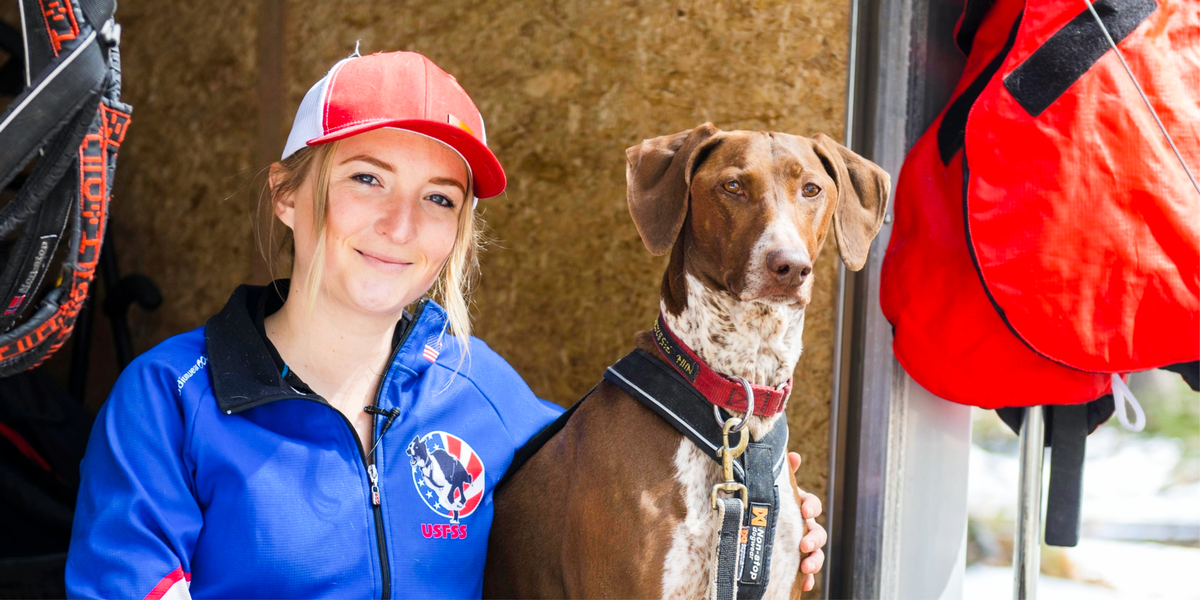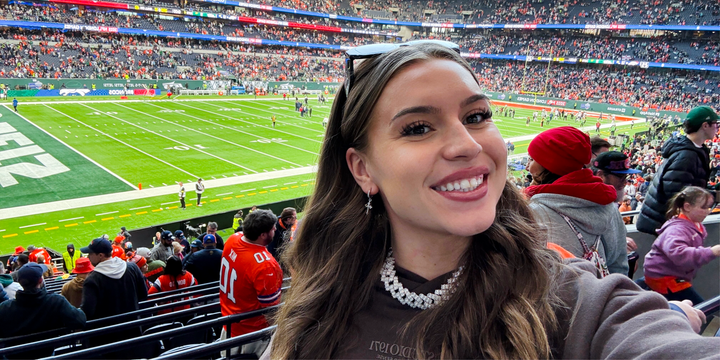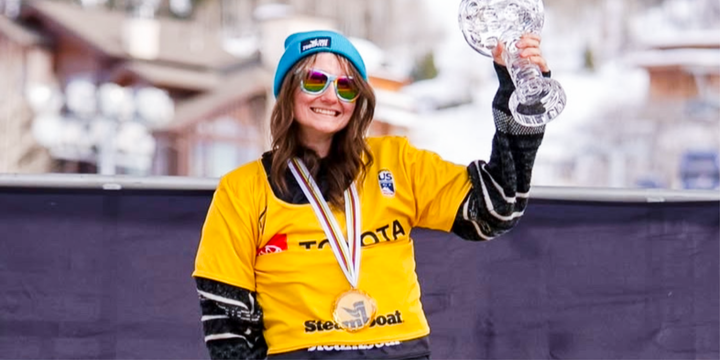The Precision Problem
Niina Baum crashed at last year's race because she knew the corner too well. Now she's chasing a world championship podium on trails she's run for 20 years—where familiarity might be her biggest obstacle.

Why Knowing Every Corner Makes Championship Racing Harder
Niina Baum stood fifth in the world after racing Spain's unfamiliar trails in 2023, mere seconds from podium position. She accomplished this with what she called "a fresh young team" competing in their first world championship environment. The performance validated her dog selection strategy and confirmed podium capability existed within her current roster.
Now she faces different pressure. The 2025 IFSS Dryland World Championships run through Minocqua, Wisconsin—her training grounds. These are trails she has navigated hundreds of times across two decades of mushing experience that began at age six on a Wisconsin farm.
The familiarity creates what Baum identifies as her central challenge: "There is no room for error. Because I know the trails and have ran them multiple times, I should be able to run the trail without any mistakes or surprises."
This psychological burden manifested physically at last year's continental championships. Leading the race, Baum widened her approach to a familiar corner, attempting to "play it safe" with her intimate trail knowledge. The overcorrection caused a crash. She dropped from first to second place.
The incident reveals the counterintuitive difficulty of home-field advantage in precision sports. Unfamiliar terrain permits flexible strategy adjustments because competitors lack predetermined expectations. Known trails impose rigid performance standards where deviation—even cautious deviation—compounds risk rather than reducing it.
Building Podium Capability Through Systematic Analysis
Baum's preparation methodology demonstrates how elite athletes translate competition results into actionable training modifications. Spain provided comparative performance data against established world championship medalists. Her fifth-place finish ahead of multiple podium veterans confirmed her team operated at international competitive levels. The seconds-off-podium margin identified specific improvement areas rather than fundamental capability gaps.
She structures her annual training cycle around thermal and seasonal constraints. Summer heat prioritizes free running for cardiovascular development while Baum concentrates on personal fitness training. Early autumn introduces biking and kick-bike work as temperatures decrease. This periodization allows Baum to reach personal fitness peaks before fall, then maintain conditioning while intensifying dog training through winter competition season.
The Spain results prompted one significant tactical adjustment for 2025. Baum is dissolving her three-year team configuration to address endurance mismatches between dogs. The new combination includes her sister's dog, introducing partnership variables that extend beyond pure speed and stamina metrics. She now programs additional training runs replicating race environment stressors—passing protocols, distraction management, directional command response under competition pressure.
This decision carries substantial risk. Established team dynamics provide performance predictability. New combinations introduce unknown interaction patterns precisely when championship stakes demand maximum reliability. The willingness to restructure proven partnerships demonstrates Baum's analytical approach: she prioritizes measured performance data over emotional attachment to successful historical configurations.
Maintaining Foundational Joy Through Elite Competition Pressure
Six-year-old Baum rode behind a husky mutt puppy across farm trails on whatever equipment could glide over snow—snowboards, plastic sleds, purpose-built dog sleds. She possessed no awareness that world championships existed or that Team USA represented a competitive pathway. The activity delivered pure kinetic pleasure: child, dog, snow, movement.
Adult Baum competes for podium positions at international championships while operating Sled Dog Central, managing social media brand NiinaTheAdventuress, and serving as lead organizer for the first IFSS Dryland World Championships hosted in United States history. She has raced across North America, Sweden, French Alps, Alaska, and Spain while serving as Team USA co-captain across multiple championship cycles.
She maintains the foundational emotional approach established at age six. Training runs still function as "fun runs" where primary focus remains the immediate experience—dogs, trails, present moment—rather than competitive outcome anxiety. This psychological continuity surprises her when examined against younger self-expectations. She anticipated that elite-level training would necessarily transform into joyless technical obligation.
The preservation of childhood pleasure within adult competition structure represents sophisticated emotional regulation rather than naive enthusiasm. Baum has developed capacity to compartmentalize performance pressure while accessing genuine enjoyment during training. This dual-processing ability prevents competitive stakes from contaminating daily training quality, maintaining dog team enthusiasm across year-round conditioning cycles.
Strategic Complementarity: Dryland Preparation as Winter Championship Foundation
Baum pursues podium finish at 2025 Dryland World Championships while simultaneously preparing for 2026 IFSS Winter World Championships across two-dog sled and skijoring events. This dual-season focus creates training efficiency rather than divided attention.
Dryland conditioning establishes cardiovascular base, musculoskeletal strength, and technical skill development that transfers directly to winter competition demands. The extended preparation timeline forces earlier training intensification, building cumulative fitness adaptations across longer development windows before winter championship season.
The strategy demonstrates how elite athletes construct multi-year competitive plans rather than isolated season objectives. Each competition functions as developmental milestone within broader capability-building trajectory. Spain 2023 tested young team viability. Minocqua 2025 targets podium breakthrough on optimized home terrain. Winter 2026 extends competitive range across multiple discipline categories.
Organizational Leadership Impact on Sport Development Infrastructure
Baum's role as lead organizer for the first U.S.-hosted IFSS Dryland World Championships has generated measurable participation increases and structural improvements within American sled dog sports. World championship designation converts regional races into accredited qualifying events, elevating competition standards and attracting broader participant pools.
Club involvement has intensified as athletes pursue Team USA qualification opportunities on domestic territory. Committee and board participation has expanded as organizational infrastructure upgrades to meet international hosting standards. The championship presence has forced systemic process improvements across scheduling, officiating, and facility management.
These developments illustrate how major event hosting catalyzes sport development beyond immediate competition outcomes. The championship creates competitive incentive structures that drive increased training commitment across local circuits. Athletes work harder knowing qualification pathways lead to home-country world championship participation rather than international travel requirements.
Baum occupies dual position as both competitor pursuing personal podium goals and organizational leader facilitating sport infrastructure expansion. This combination intensifies her 2025 championship pressure—she must deliver both competitive performance and operational execution simultaneously. Failure in either domain carries amplified consequences because of her visible dual role.
The Home Trail Paradox
Baum approaches her most challenging competitive moment with her strongest team preparation on her most familiar terrain. The convergence creates paradoxical pressure: intimate trail knowledge that should provide advantage instead imposes perfection expectations that restrict tactical flexibility.
She crashed at continental championships because she knew the corner too well, attempting to optimize beyond natural running patterns. The 2025 world championship outcome depends substantially on her capacity to convert home-field familiarity into confident execution rather than cautious overcorrection.
The podium margin exists within seconds. Spain demonstrated her team operates at medal-competitive performance levels. Minocqua demands she trust that capability while racing past landmarks she has navigated since childhood, before she knew world championships existed or that sled dogs could carry her around the world.




Comments ()